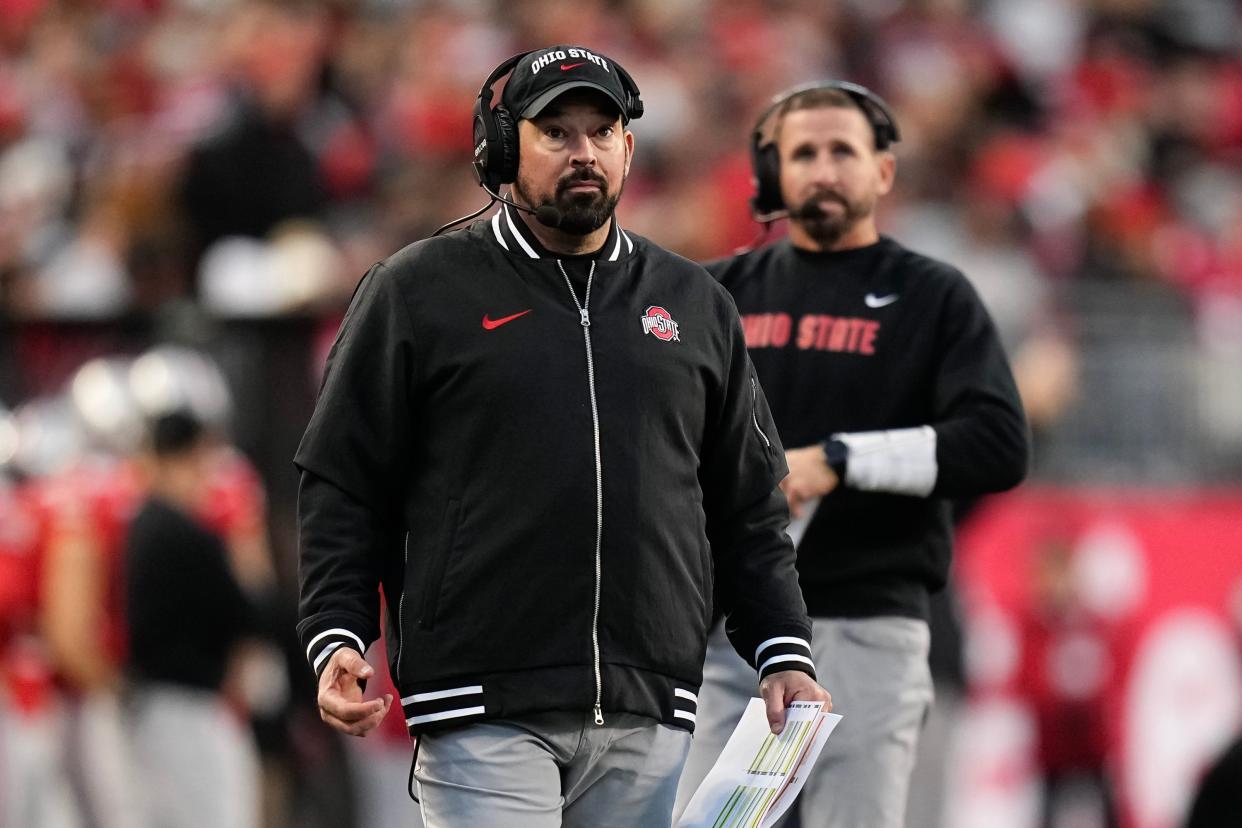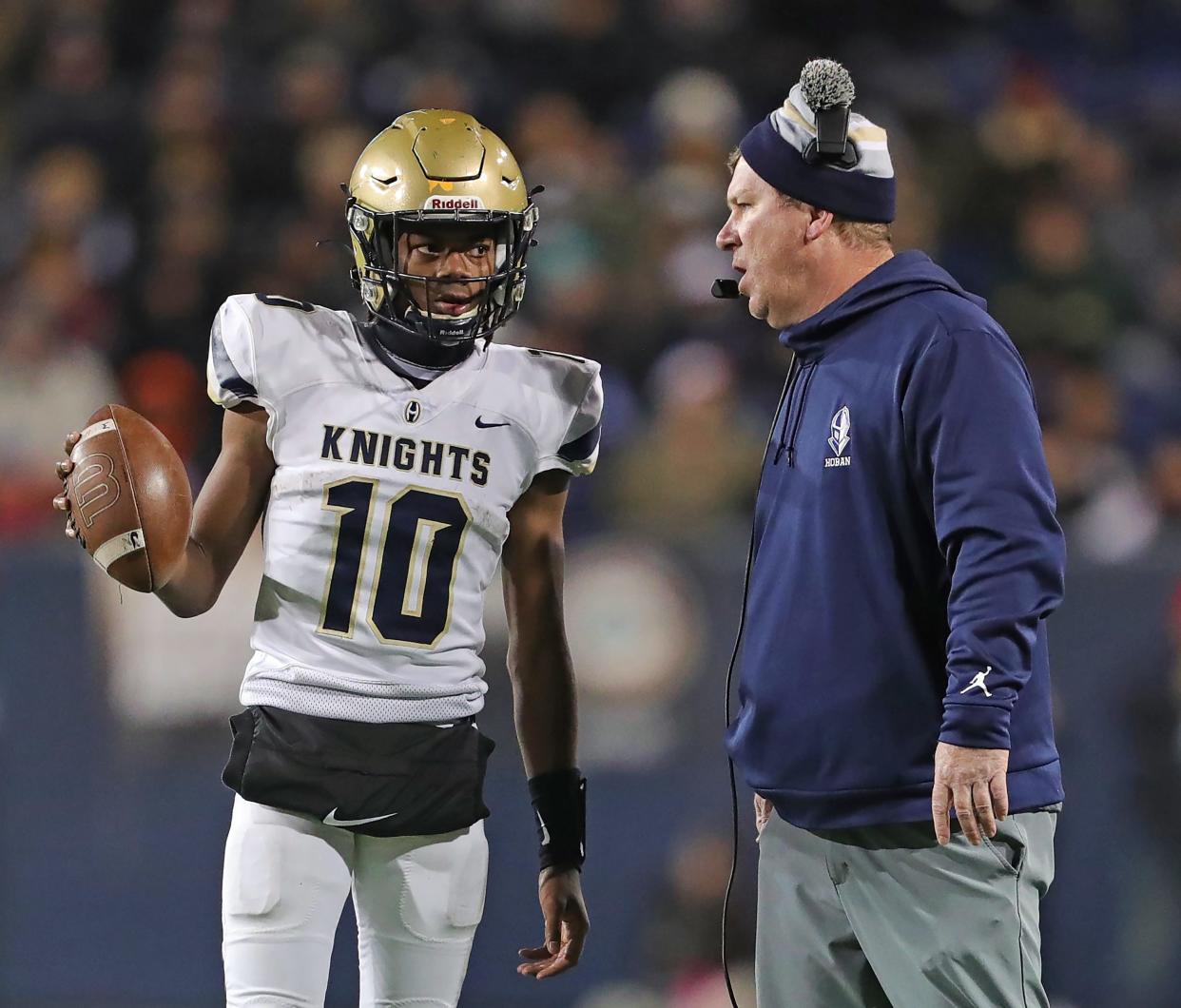Northeast Ohio high school football instrumental in bringing 7-on-7 to spring sports

Editor's note: This is the first in a four-part series on 7-on-7 football. We'll look at how 7-on-7 came to Ohio and how it can coexist with spring sports. The series will also look at how to keep bad seeds out of the game and whether or not spring football is the next step.
At long last, 7-on-7 football has come to Ohio, and the Ohio High School Athletic Association decision allowing it has its roots in Northeast Ohio.
This winter, Shaker Heights four-star safety Trey McNutt went out of state to play in a 7-on-7 tournament. The Raiders self-reported and he was suspended a game.
McNutt basically came back with a "you might as well suspend me two games because I’m doing it again" response.
He did it again. Shaker Heights self-reported again but, before a possible ruling was in place, the OHSAA allowed 7-on-7 retroactive to August of last year.
In doing so, Ohio is believed to have become the final state in the nation to make this form of spring football a thing.
“I would say that Trey and his family were an absolute catalyst for the changes that we’re seeing from OHSAA,” Shaker Heights athletic director Mike Babinec said. “I don't think there’s any doubt that he was at the forefront. Obviously, when we found out about it we self-reported and it came back with a one-game suspension. I actually think that kind of spearheaded more of the outcry from the public.
“I think Trey was at the center of what's going on. One of the pieces with Trey and his family's assessment was comparing it to other sports and opportunities that kids have in the offseason, whether it's AAU basketball, travel baseball and all the opportunities those other sports have.”
Why Trey McNutt was the tipping point for 7-on-7 football

McNutt’s fight spread throughout the state and a two-decade old argument intensified.
To the credit of the OHSAA and executive director Doug Ute, they were in tune with what McNutt had to say as well as what Ohio State coach Ryan Day and Buckeyes assistant Brian Hartline said at the Ohio High School Football Coaches Association meeting.
Previously, 7-on-7 competition was not permitted until May 15.
“The changes mean that prior to May 15, a limit of seven football players from the same school team can now play together in a 7-on-7 competition, and there is no limit on the number of 7-on-7 competitions in which a player or coach can participate,” Ute said in a press release on April 5. “After May 15, there is no change to the current regulation, meaning there is no limit on the number of players from the same school team who can compete together in 7-on-7 competition. In addition, there are 13 days of coaching permitted in excess of the seven-player limit from May 15 to July 31. Contact and equipment, other than helmets and cleats, remain prohibited during that time.”
The basis of the argument didn’t have anything to do with the 28-day dead period after a team’s football season was over.
The argument basically came down to the question of why sports like volleyball, soccer, basketball, baseball and softball have so many other avenues for offseason training, while football has to take a backseat?
The argument for 7-on-7 football focused on other sports as well
Sure, there were football camps for recruiting purposes, but the essence of 7-on-7 was lost in the mix.
“I can go play so many other things right now,” OHSAA football administrator Beau Rugg said. “And even if it was recreationally, couldn't do any form of football. I mean, if you went and played in the YMCA 7-on-7, it was a violation. That's just not right. We want people to enjoy the game. In my personal opinion, I think this will enhance kids' feeling for football as they play it more and get to do some things outside and keep our football strong.”
When Day and Hartline, who also was a state champion hurdler in track at GlenOak, voiced their opinion, it really got the OHSAA thinking.
As Rugg said, Ute has been very influential in looking outside the box after being named executive director in 2020.
He sees the benefits of Junior Olympic volleyball, AAU basketball and USA lacrosse, so the feeling was more of, "Why not give the same avenues for football?"
“Ryan Day and Brian Hartline, part of their speeches to us were, ‘Hey, guys, our state’s behind. We’ve got to realize this is coming. Let’s be on it,’” Nordonia coach Jeff Fox said.
Ex-Florida high school coach knows 7-on-7 football can work in Ohio

Getting Ohio caught up to the rest of the nation is up to the coaches. Parameters have been put in place. Now, it’s time to work out the gray areas.
Hoban coach Tim Tyrrell knows first hand that it can work.
He coached Chaminade-Madonna College Prep for five years in Hollywood, Fla., and has been outspoken about 7-on-7 and where it fits in the high school landscape.
“I mean, I think if you do it right, there is no negative,” Tyrrell said. “When I moved to Florida and did it, you had to learn how to do it. I think the first two years of anybody doing this in Ohio, unless you have an experience with it, it’s going to be a learning process, but if you do it correctly, in my mind there's nothing really negative for it.
“It's a benefit to the kid because he’s practicing his skill, and that's what Ohio lacks is skill. Not skilled players, just skill on running routes and playing man coverage and doing different things that warmer states have the ability to do. Kids are going to get better. They're going to learn their craft a little bit better, I guess is the easiest way of saying it.”
Contact Brad Bournival at bbournival@gannett.com and follow him on Twitter at @bbournival
This article originally appeared on Akron Beacon Journal: The steps to how, why 7-on-7 got the OK from the OHSAA in the spring
